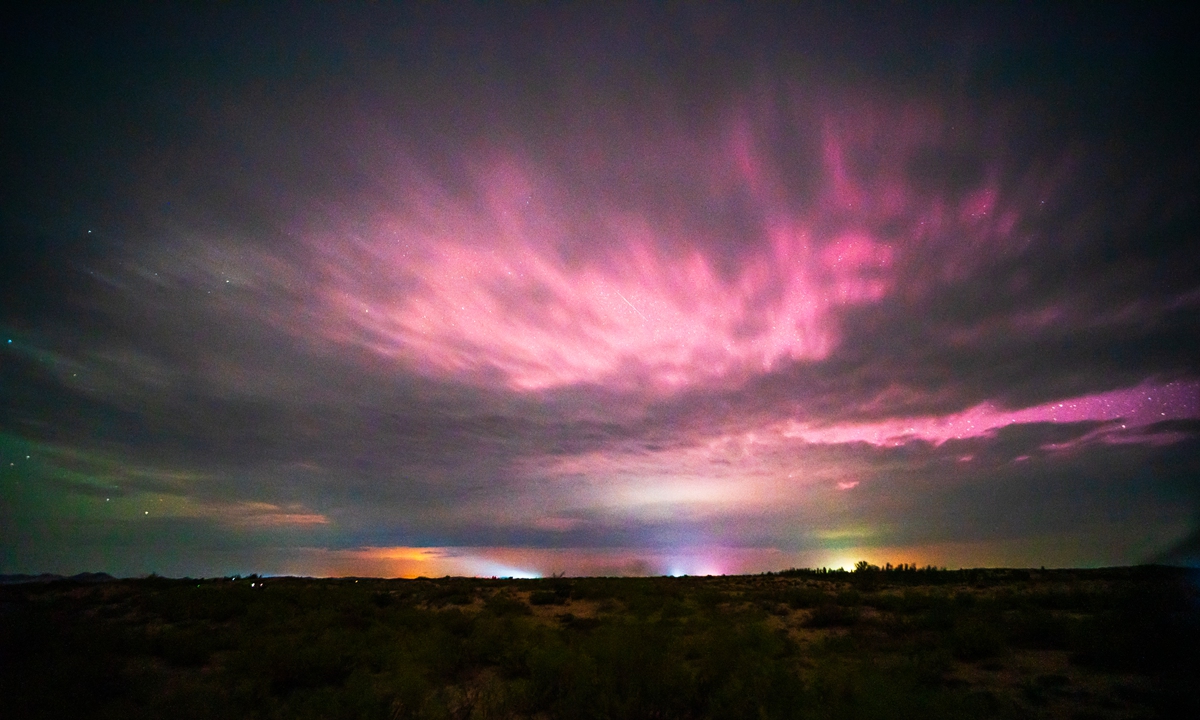
An aurora is seen on the outskirts of Chifeng city, North China’s Inner Mongolia Autonomous Region on May 11, 2024. Photo: VCG
A geomagnetic storm hitting Earth between Wednesday and Thursday was forecasted by China’s National Center for Space Weather (NCSW) following an explosive outburst of plasma from the sun, also known as a coronal mass ejection (CME), was released from the sun on Monday and is now barreling toward the Earth and due to arrive on Wednesday.
If the CME arrives within Earth’s radius, a series of changes in the space environment including the Earth’s magnetic field fluctuations, increased density of upper atmosphere and disruption to the previous stability of the Earth’s ionosphere will occur, causing anomalies and disruptions to the communications, navigation, aviation and aerospace, disrupting the power grid and even affecting long-distance animal navigation, the NCSW warned.
According to the NCSW, this CME originated near the central region of the visible surface of the sun, and is directed relatively straight toward Earth.
The solar active region 13757, which produced this CME, is very small, so small that it could easily be overlooked. Additionally, with no significant large solar flares before the actual ejection, active region has turned out to be “maverick” in nature. However, this seemingly inconspicuous small sunspot, a cooler part of the sun’s surface caused by massive changes in the sun’s magnetic field, managed to eject a substantial amount of coronal mass.
According to space.com, CMEs carry with them electrically charged atoms known as ions. When CMEs collide with the Earth’s magnetosphere, they can trigger geomagnetic storms. During geomagnetic storms the ions collide with gases in the Earth’s atmosphere and release energy in the form of light, which is recognized as the northern lights or aurora borealis in the Northern Hemisphere or the southern lights, or aurora australis in the Southern Hemisphere.
Based on the potential intensity of this geomagnetic storm, aurora might occur in China, but it is expected to be relatively weak.
Earlier this year, the Earth’s magnetic field experienced a
massive geomagnetic storm (kp=9), the strongest geomagnetic storm in two decades, on the night of May 10 to the early hours of May 11, due to a coronal mass ejection event from the sun. From Northwest China’s Xinjiang Uygur Autonomous Region to Northeast China’s Heilongjiang Province, multiple northern regions across China are among the best destinations to enjoy the stunning beauty of the aurora which attracts visitors and photographers to rush to capture the mesmerizing natural display.
Global Times




